Watch for These Pesky Pests
Solutions to Keep Citrus Trees Healthy

Ants
Ants are a key threat to lemon and other citrus trees as they promote insect infestations through “symbiotic relationships” with a variety of arthropod insects including scale, mealybugs, cottony cushion scales, whiteflies, and aphids. This means that they use other insects in the same way that humans use dairy cows to produce milk.
Ants do this by carrying insects up into citrus trees and onto foliage. Anthropod insects have sharp mouthparts that bite into plants to eat sap. Ants harvest honeydew, a sugary excrement from sap-eating insects. Ants protect their insect herds from other predator insects and move them from “pasture to pasture” as foliage sources are used up.
Cures for Ants
- Ant Barriers
- Borax Ant Traps
- Insecticidal Soap
Photo credit: “Citrus tristeza: aphid vectors of CTV” by Plant pests and diseases is licensed under CC PDM 1.0

Scale
Scale is an insect with a hard shell that looks like a waxy bump or blister on foliage or branches. They are often mistaken for part of the tree’s own growth. Scale sucks sap from plants and produce a sticky substance called honeydew that ants harvest. Honeydew build up on leaves provides an environment for mold and fungus.
Remove affected foliage or thoroughly wash all plant parts with insecticidal soap. Mere spraying of insecticidal soap or neem oil won’t have much effect as the shells on scale protect them from spray products. After washing, spray the entire tree with Neem Oil.
Check tree each week for several weeks and repeat the process as needed.
Cures for Scale
- Washing with Insecticidal Soap
- Neem Oil
- Lady Bugs
Photo Credit: “Citrus: Scale” by Plant pests and diseases is licensed under CC PDM 1.0
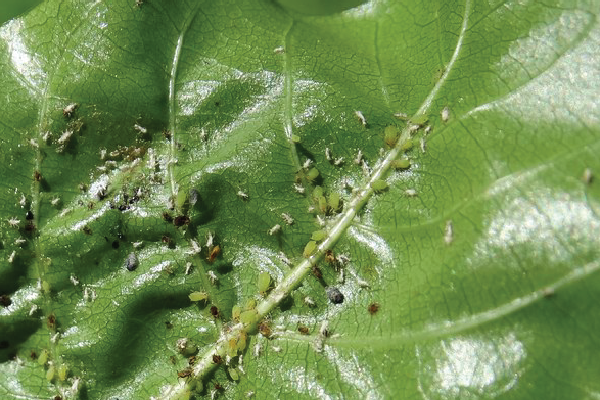
Aphids
Aphids are a small bug that feeds by sucking sap from plants. It reproduces rapidly, often producing live young without mating, and may live in large colonies that cause extensive damage to crops. Aphids suck sap from plants and produce a sticky substance called honeydew that ants harvest. Honeydew build up on leaves provides an environment for mold and fungus.
Try to inspect your tree at least once a month to ensure that you have no infestation. Egg clusters or larvae will be present on the undersides of infested leaves. Wash away larvae with insecticidal soap or remove infested leaves by hand, then spray the tree with neem oil.
Cures for Aphids
- Wash with Insecticidal Soap
- Neem Oil
- Lady Bugs
Photo Credit: “Tahitian gardenia: Aphids and a mealybug destroyer (Cryptolaemus montrouzieri, larval stage)” by Plant pests and diseases is licensed under CC PDM 1.0
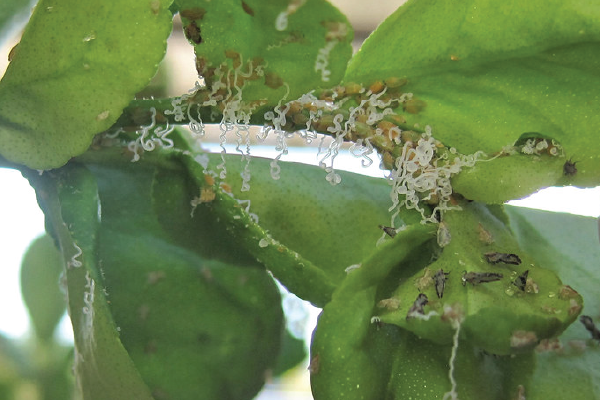
Asian Citrus Psyllid
A lethal disease called Citrus Greening or HBL (Huanglongbing) Virus, spread by the Asian Citrus Psyllid is devastating citrus around the world including the continental USA. As of this writing, Hawaii has no incidence of this virus yet. At the moment, there is no cure for this disease. The fruit on infected trees will start tasting bitter, and the tree will decline until it dies – spreading HLB to other trees in the process.
Neither of these organisms are harmful to pets or people. They are only a threat to citrus. Your fruit is safe to eat, but you shouldn’t sell it or give it away to anyone who lives in another area. And absolutely don’t move any tree parts like cuttings out of your area.
You can identify asian psyllids by looking for the nymphs. They stay on the new leaves, don’t move much, and most importantly, they produce distinctive waxy white tubules.
Yellowed leaves are the first and most important symptom. However, citrus often has yellowed leaves because of nutrient deficiencies. You can tell the difference because leaves that are yellow due to a nutrient deficiency have a similar pattern of yellowing on both sides of the leaf.
If you detect the presence of Asian Psyllids, contact your agricultural department immediately and do not spread plant material any where.
Photo Credit: “20180905-APHIS-BB-IYPH_0022” by USDAgov is licensed under CC PDM 1.0
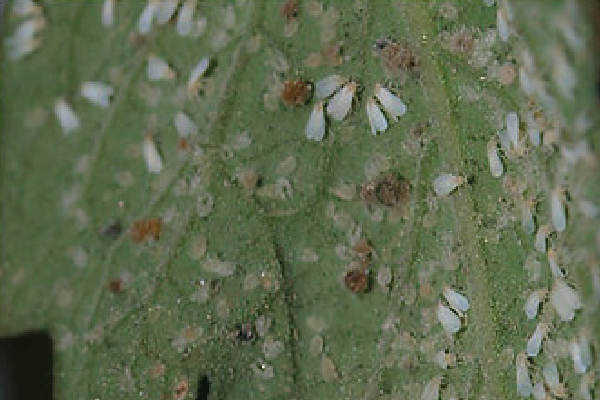
Whiteflies
Whiteflies are a small white insect that feeds by sucking sap from plants. They reproduce rapidly and produces large colonies that cause extensive damage to crops. Whiteflies suck sap from plants and produce a sticky substance called honeydew that ants harvest. Honeydew build up on leaves provides an environment for mold and fungus.
Try to inspect your tree at least once a month to ensure that you have no infestation. Egg clusters or larvae will be present on the undersides of infested leaves.
Spraying with insecticidal soap kills whiteflies and larvae on contact. It’s even more effective to wash away larvae with insecticidal soap or remove infested leaves by hand, then spray the tree with neem oil.
You can also use commercially available yellow sticky traps or you can make them by painting a 12-inch by 6-inch piece of cardboard yellow and coating it with a sticky substance such as petroleum jelly. Place these traps out of direct sunlight and stake or hang them so that the trap’s sticky side faces the tree. Locating traps as near as possible to the citrus with the whitefly problem and replacing traps or maintaining a sticky surface are also important.
Cures for Whiteflies
- Wash with Insecticidal Soap
- Neem Oil
- Yellow Sticky Traps
- Lady Bugs
Photo Credit: “whiteflies09096” by Kel and Val is licensed under CC BY 2.0
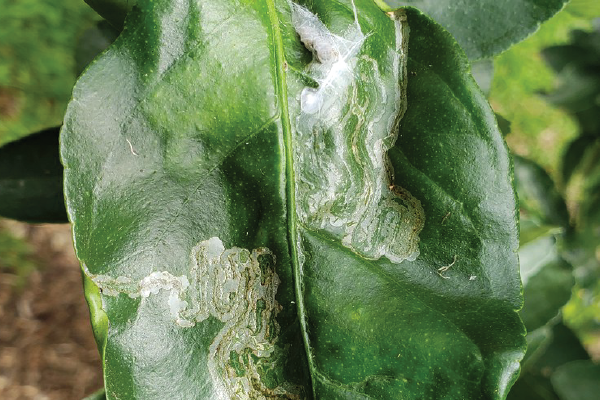
Leafminers
Citrus leafminers tunnel under the top layer of leaves, leaving tracks of waste under a thin transparent layer of leaf. They are most active from mid-summer through autumn or early winter and favor new growth. It’s therefore a good idea to spray neem oil as new leaves flush.
Adult leafminers are small, silvery-white moths that flutter around trees at night. Females lay single eggs on the undersides of developing leaves. The eggs hatch in 4 or 5 days, and the emerging larvae burrow into the plant tissue to feed. This feeding activity causes the leaves to curl and become misshapen. Citrus trees older than 4 years typically tolerate the feeding damage without reduced crop yield or plant growth. Young trees sometimes suffer stunted growth but rarely die from their injuries.
Pruning for Defense
Adult citrus leafminers are attracted to newly developing foliage, so help keep the flush cycles short by pruning your citrus tree just once a year in the early spring as pruning stimulates flushing. This gives the leaves enough time to mature and harden so the larvae won’t be able to tunnel inside.
Don’t prune off damaged foliage because the leaves will still produces food for your tree.
If your tree has “water sprouts” – fast vertical growth limbs that shoot straight up from large branches or the trunk – cut these off as they produce larvae-attracting new leaves for a long time while not producing much fruit.
Organic Insecticides
Spraying citrus trees with neem oil, which comes from the neem tree and helps prevent adult moths from laying eggs on the foliage. Spray the undersides and tops of leaves until they glisten with wetness. Treat your citrus tree with neem oil once a week during every flush cycle for optimal results.
Cures for Leafminers
- Defensive Pruning (early Spring)
- Neem oil every week during flush cycle
Photo Credit: “Citrus leafminer (Phyllocnistis citrella)” by Plant pests and diseases is licensed under CC PDM 1.0
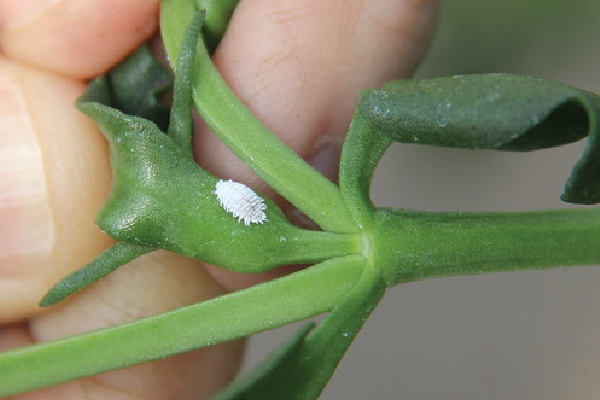
Mealy Bugs
Mealy bugs are a small white insect that feeds by sucking sap from plants. Mealy bugs are related to scale. They cause damage by sucking the juice from their host plants. Like many pests, mealy bugs tend to favor new growth. Over time, their damage causes the leaves to yellow and eventually drop from the plant. They can also cause fruits and flower buds to prematurely drop off. They reproduce rapidly and produces large colonies that cause extensive damage to crops. Mealy bugs suck sap from plants and produce a sticky substance called honeydew that ants harvest. Honeydew build up on leaves provides an environment for mold and fungus.
Try to inspect your tree at least once a month to ensure that you have no infestation. Egg clusters or larvae will be present on the undersides of infested leaves.
Visible mealybugs are the females. They are small (about one-tenth of an inch) insects with fringes around their bodies and, depending on the species, twin tails. Male mealy bugs are tiny winged insects that are rarely seen on plants. Female mealy bugs hide their eggs in the fluffy white excretions. Eggs hatch in about 10 days, producing crawlers or nymphs. The nymphs relocate to another part of the plant and spend another 4 to 8 weeks developing into the adult form.
Spraying with insecticidal soap kills mealy bugs and larvae on contact. It’s even more effective to wash away larvae with insecticidal soap or remove infested leaves by hand, then spray the tree with neem oil.
Cures for Mealy Bugs
- Wash with Insecticidal Soap
- Neem Oil
- Lady Bugs
Photo Credit: “Mealy bug” by UGA CAES/Extension is licensed under CC BY-NC 2.0
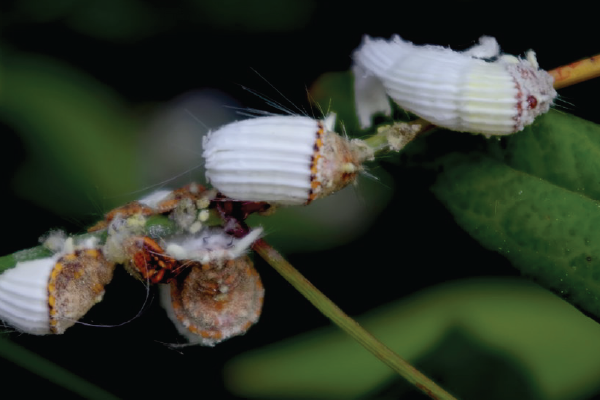
Cottony Cushion Scale
Cottony cushion scale likes moist, cool conditions and do well in citrus trees with dense canopies. Open the tree by pruning the interior of the canopy to remove suckers, dead branches, and crossing limbs.
Natural enemies are the best way to control Cottony Cushion Scale: the Vedaila Beetle and the Cryptochaetum Fly. But if they are not in your garden, try: isopropyl alcohol, also known as rubbing alcohol. Spray the undersides of leaves to kill on contact.
Cures for Cottony Cushion Scale
- Spray alcohol
- Vedaila Beetles and Crytochaetum Flies
Photo Credit: “Icerya purchasi” by AtomicMonster is licensed under CC BY-NC 2.0
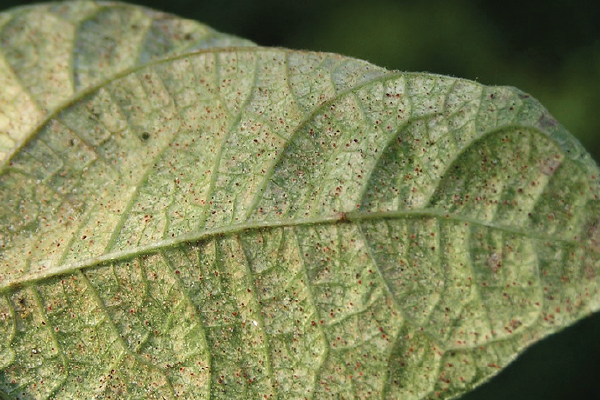
Spider Mites
Spider mites are arachnids, like spiders that feed on your plants. Spider mites are reddish in color, but since they are tiny they can be hard to see with the naked eye (you may even need a magnifying glass). Spider mites prefer hot, dry conditions.
Spider mites live on the underside of plant leaves and spin webs on the leaves. This fine webbing is often the first sign of mites on your plants. You may also notice spots on the leaves of infested plants. In larger infestations leaves may drying up and fall off your plant.
Spider mite infestations can occur quickly since the female lays a large number of eggs with a fast egg to adult lifecycle.
Cures for Spider Mites
- Spray Neem Oil
- Spray Insecticidal Soap
- Lady Bugs
Photo Credit: “Spider mites” by Plant pests and diseases is licensed under CC0 1.0
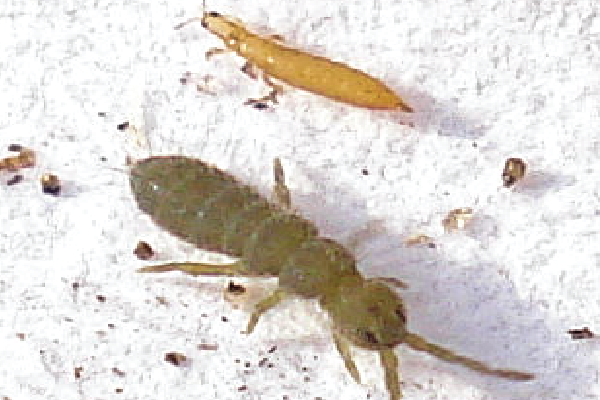
Citrus Thrips
Citrus thrips have piercing, sucking mouthparts for feeding on the inner contents of leaves. The can damage foliage, twigs and fruit.
Thrips are small – only about 1/20 of an inch long – so you may be able to identify them with good light and a strong magnifying glass. Citrus thrips range from whitish to orange in color and have short, thick abdomens. They have fringed wings that are longer than their bodies. Larvae are white to light orange. Look for them on the leaves and fruit. Older larvae have fat abdomens.
Symptoms
Rind of fruit has scabby, grayish or silvery scars on the rind and leaves become discolored and deformed, but do not fall from the tree. Healthy citrus trees usually can withstand a citrus thrip infestation and will recover from the damage.
Cures for Citrus Thrips
- Spray Spinosad early in fruit season
Photo Credit: “DSC08839 Collembola Isotoma viridis” by Mick E. Talbot is licensed under CC BY 2.0
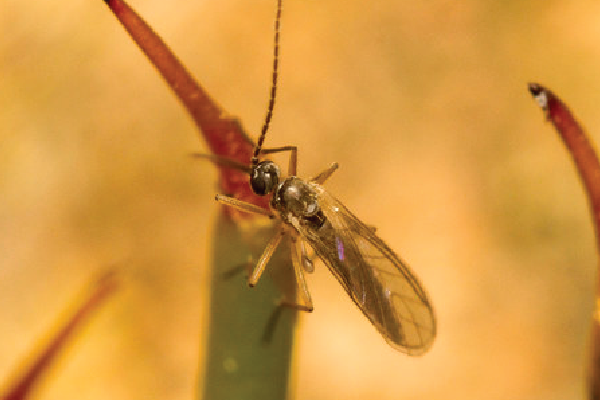
Fungus Gnats
Over-watering can create a perfect environment for Fungus Gnats that eat at the root system of the tree and will eventually kill your citrus tree.
Although citrus trees growing outdoors are not affected by fungus gnats, indoor citrus trees are at risk of a fungus gnat infestation. This is because fungus gnats are attracted to soil that has been allowed to remain damp.
Cures for Fungus Gnats
- Hydrogen Peroxide: one part hydrogen peroxide in 4 parts water is a good mixture that will kill the larvae. Pour into soil. During application, you will hear fizzing sounds for a while. This is the peroxide reacting with and breaking down to Oxygen and water and is no reason for worry.
- Sand: Add a layer of sand on top of existing moist soil to keeps the top layer dry and break the lifecycle of the gnat, and kills the larvae under and prevents any further development.
- Yellow Sticky Traps
Photo Credit: “Among the moss……..” by The Manic Macrographer is licensed under CC BY 2.0
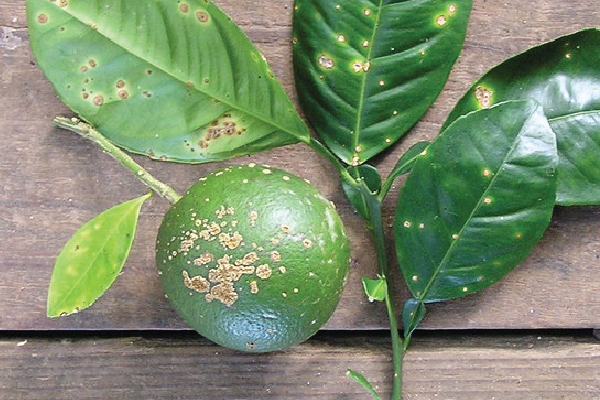
Citrus Scab Fungus
Citrus Scab is a fungal disease that results in brownish, warty scabs that appear on the rind, leaves and stems. While it does not make the fruit inedible, it does make fruit ugly.
Fruits are only vulnerable during the first few weeks of their development. A similar disease, called sweet orange scab, may affect fruits in combination with citrus scab.
It is a result of a fungal pathogen spread by splashing water and wind-driven rain.
Treat Citrus Scab Disease by checking the underside of leaves and small twigs for raised pustules that may appear before bloom of your fruit trees. Treating citrus scab disease is best accomplished with the use of fungicides. The first treatment should be applied before bloom. Some proven to be effective treatments include a spray when blooms are partially open, about 25% of blooms. Don’t use a copper-based fungicide for the first spray, but these are most effective for those following the first initial treatment. Spray again at petal-fall and then two to three weeks later.
Cures for Citrus Scab Fungus
- Commercial Fungicides
- Liquid Copper Fungicide
Photo Credit: “Valencia citrus canker 1a” by Plant pests and diseases is licensed under CC0 1.0
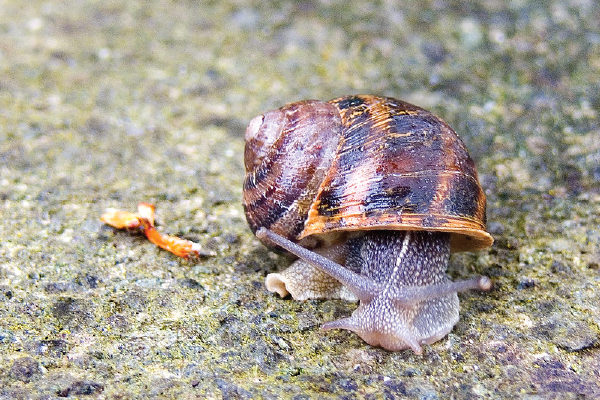
Snails
Snails are a threat to citrus.
Cures for Snails
- Trim fruit so it’s not hanging to the ground.
- Remove dropped fruit.
- Use Snail Bait.
Photo Credit: “snail” by Johnwobert is licensed under CC BY-NC-SA 2.0
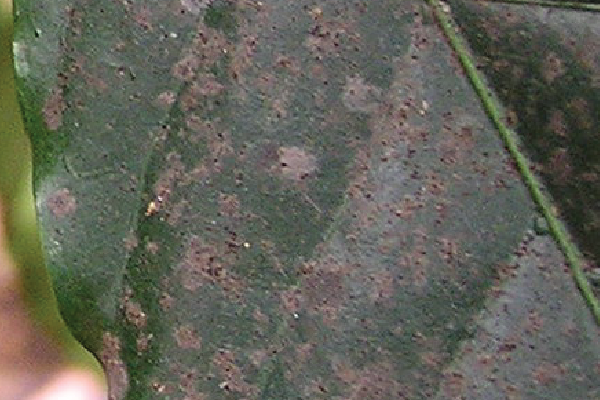
Sooty Mold
Sooty mold is mold growing on Honeydew, the waste from arthropod insects like scale, mealybugs, cottony cushion scales, whiteflies, and aphids.
Remove honeydew and mold by washing all plant surfaces with insecticidal soap. After washing, a spray of neem oil is recommended to kill any remaining bugs.
Cures for Honeydew
- Insecticidal Soap
- Neem Oil
Photo Credit: “Sooty mold” by Plant pests and diseases is licensed under CC0 1.0
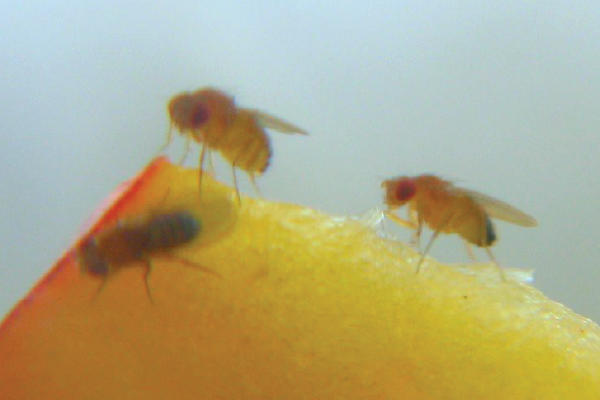
Fruit Flies
Fruit flies can be detrimental when they infest citrus trees, as they are not readily noticeable and can reduce fruit to mush. An important considerations for controlling fruit flies is to pick fruit early and often, whenever possible.
Cures for Fruit Flies
- Remove all ripe and overripe fruit from your trees. Female fruit flies lay eggs in the flesh of citrus fruit. Larvae emerge from the eggs and feed on the inside of the fruit. Check for the white larvae when harvesting to confirm an existing population.
- Pick up fallen fruit and bury it deeply in the ground or place it in an airtight space until larvae are dead. Kill pupae before adding the fruit to a compost pile; otherwise, the population continues to prosper.
- Set a commercially-available glass or plastic trap to lure the fruit flies. Tent traps lure flies with a cotton wick and trap them with a sticky floor. Use simple, yellow sticky boards without attractants.
Photo Credit: “expedition atop mount tangerine” by mikelietz is licensed under CC BY-NC-SA 2.0
Super Heroes to Rescue Your Trees!
Solutions to Protect Your Citrus Trees
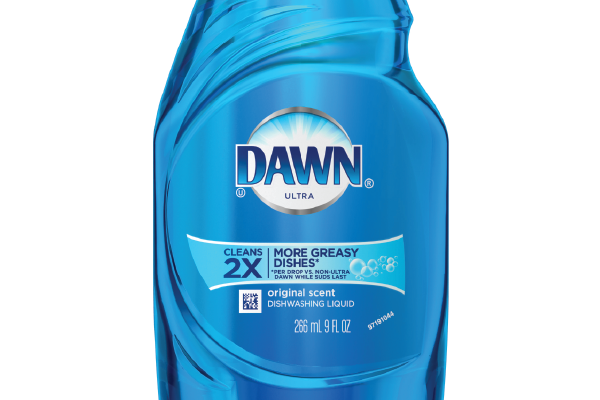
Insecticidal Soap
Kill insects on contact or use insecticidal soaps to wash off infestations of soft-bodied insects and arthropods such as aphids, mealybugs, thrips, whiteflies, spider mites, leaf hoppers, earwigs, and immature scales (crawlers).
Soap Options
Common soaps that do the trick include commercial Insecticidal Soap, liquid detergent soap (Dawn brand dish soap is commonly recommended as the most effective due to the inclusion of a “surfuctant” petroleum compound — a chemical to reduce the surface tension of a liquid when it’s dissolved, i.e., to cut grease or suffocate insects) or Dr. Bronner’s pure-castile liquid soap (some people think it’s gentler on leaves).
How It Works
Insecticidal soaps exploit the fatty acids in soap to both suffocate insects and disrupt the permeability and structure of their cell membranes, dissolving their exoskeletons and fatally dehydrate them. Wet contact is essential, as insecticidal soaps only work when sprayed directly on pests, and are only effective for as long as they remain wet.
Mixing Solutions
Follow insecticidal soap instructions or make a homemade mix with 2.5 tablespoons Dawn Dish Soap, 2.5 tablespoons vegeatable oil and 1 gallon water. Use this solution to spray on plants (make sure to spray underside of leaves to fully coat where pests may be).
Washing Infestations
If you have large infestations, you can also use insecticidal soaps to scrub all leaves, stems and trunks. Dishcloths, sponges and soft toothbrushes are useful to wash all areas and crevices. Make sure the top side and underside of leaves are entirely washed and scrubbed of pests, sooty mold and any sticky sap substances. Treat clean plants once cleaned with neem or horticultural oil.
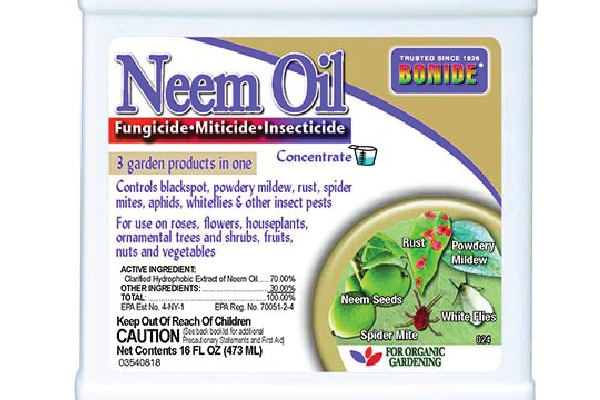
Neem Oil
for control of foliage feeding worms (catapillars), Thrips, Leafminers.
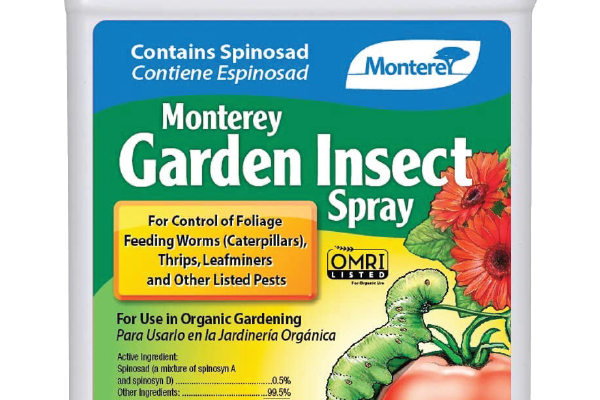
Spinosad Spray
for control of foliage feeding worms (catapillars), Thrips, Leafminers.
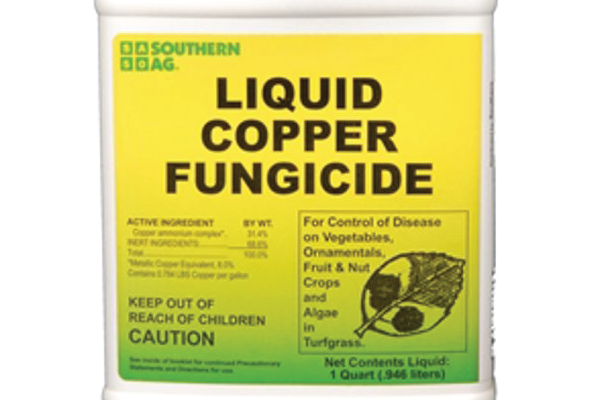
Liquid Copper Fungicide
It is vital that you check your tree regularly to prevent fungus and treat the tree with Liquid Copper Fungicide.
One of the first signs that a citrus tree may be suffering from root rot is that the fruit has blemishes or decaying or yellowish-brown spots.
A fungus or root rot can cause citrus leaves to become moldy or have blackened veins or black lesions. Root rot causes a slow decline of the tree so it is imperative you have adequate soil drainage and avoid overwatering. As root rot advances, the bark cracks and dies leaving dark sunken cankers on the tree trunk.
Prevent any problems before they start, use Copper fungicide which is effective if used regularly to prevent many of the common fungus problems known to citrus.
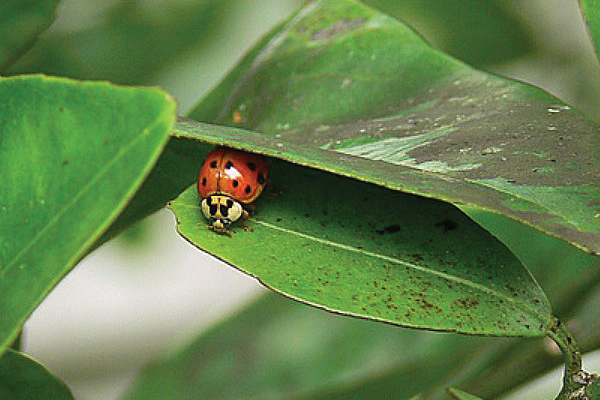
Lady Bugs
If you have an orchard, it is always a good idea to have a tape/tangle-foot barrier and to purchase Ladybugs and release those yearly. Ladybugs will attack all stages of scale.
If you notice beetles on your citrus trees, do not use pesticides. Beetles are keeping your trees healthy and will protect your investment.
Spraying soapy water onto the tree does little to remove scale insects. So it is always a good idea to completely wash citrus trees with Dawn dish-soap and warm water, with a wash-cloth. After washing treat tree with Horticultural Oil or Neem Oil.
Check tree again in a week and repeat process if required. It is always a good idea to wash the tree every time you fertilize.
Photo Credit: “lady bug” by sodaro,k is licensed under CC BY-NC 2.0
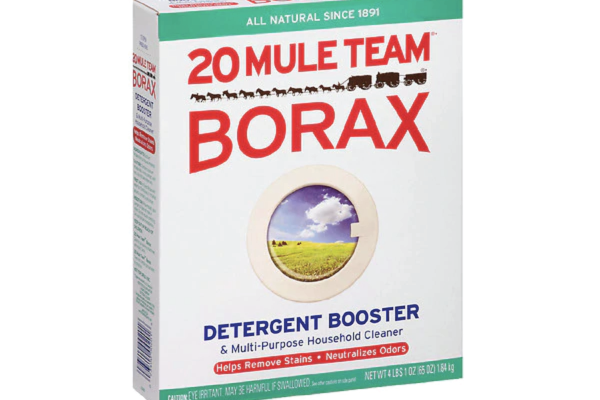
Borax Ant Traps
Borax, or sodium borate, is a mineral salt that interferes with an ant’s digestive system and eventually kills them, but not before they share the Borax bait with fellow ants at the colony. Borax is also a natural roach killer.
Note that while some recipes for kill ants use liquid delivery systems (e.g., mixing Mountain Dew soda with Borax), delivering Borax in solid bait form is essential to remove an ant colony. This is because while adult ants only digest liquids, ant larvae digest and turn solids into a liquid for the queen, which is the target of your trap.
Make a Borax Ant Trap
- 3 parts granulated sugar
- 1 part Borax powder
- Disposable container
Mix sugar and Borax in a disposable container that ants can get into. The sugar attracts the ants and the Borax kills them. A plastic water bottle with holes works well. The goal is to keep the mix accessible to ants, dry to rain and watering, and safely inaccessible to pets.
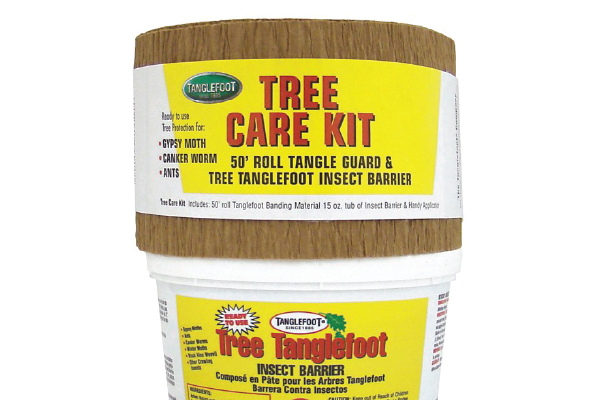
Ant Barriers
If you don’t mind being around super-sticky, non-drying insect traps, look for Tanglefoot or CatchMaster insect barrier compounds. These stop ants, cankerworms, gypsy moths, spider mites, snails, slugs and other crawling insects to climb into your trees. These long-lasting compounds are waterproof and works all season long. For the best results, apply these compounds to banding tape for easy removal.
Make sure to also band any support stakes and keep foliage clear from walls, railings or other plants, as insects can climb them to gain access to your tree.
Check bands when you water your tree, to make sure ants haven’t built a bridge across your barrier.
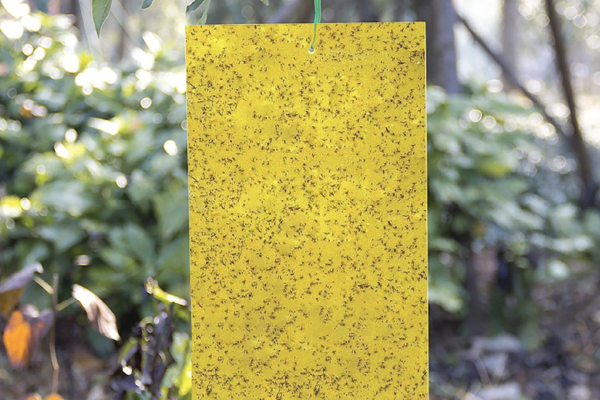
Yellow Sticky Traps
For whiteflies, you can use commercially available yellow sticky traps or make them yourself by painting a 12-inch by 6-inch piece of cardboard yellow and coating it with a sticky substance such as petroleum jelly. Place these traps out of direct sunlight and stake or hang them so that the trap’s sticky side faces the tree. Locating traps as near as possible to the citrus with the whitefly problem and replacing traps or maintaining a sticky surface are also important.
